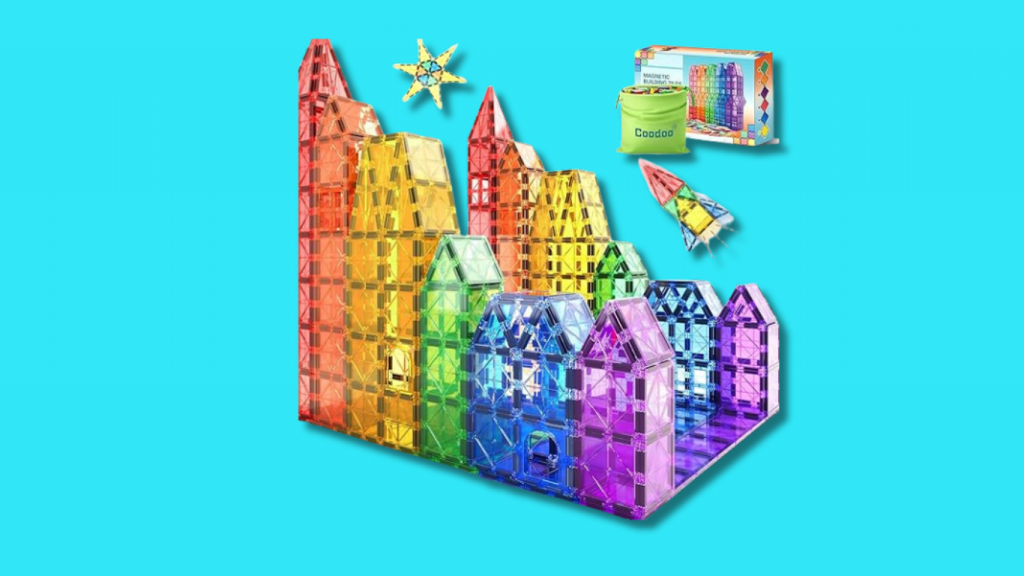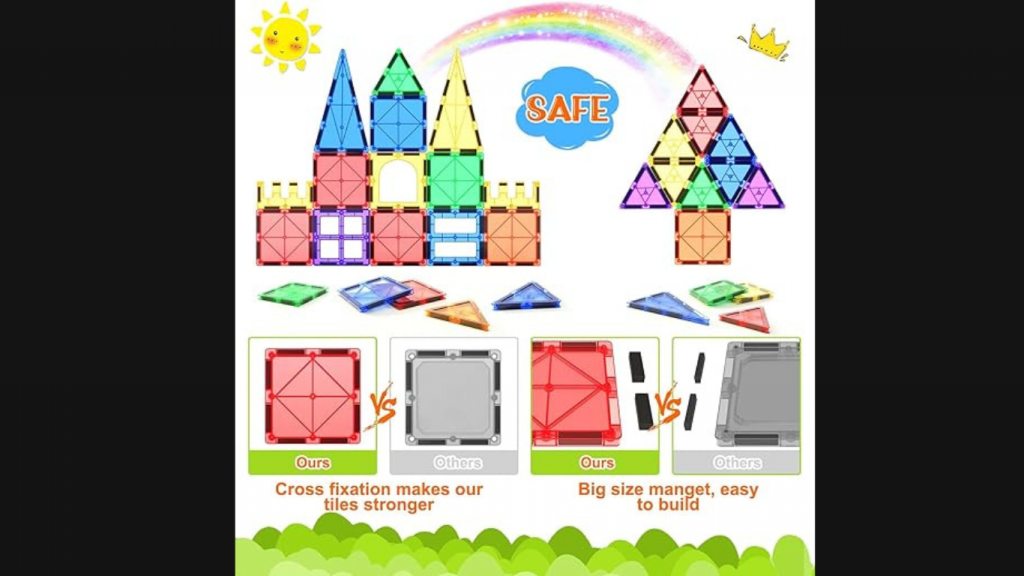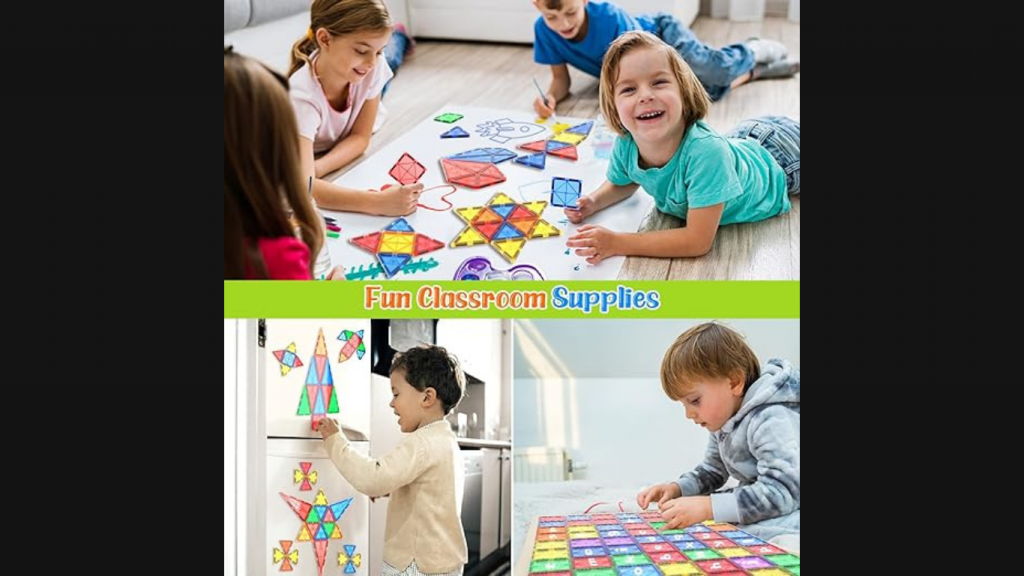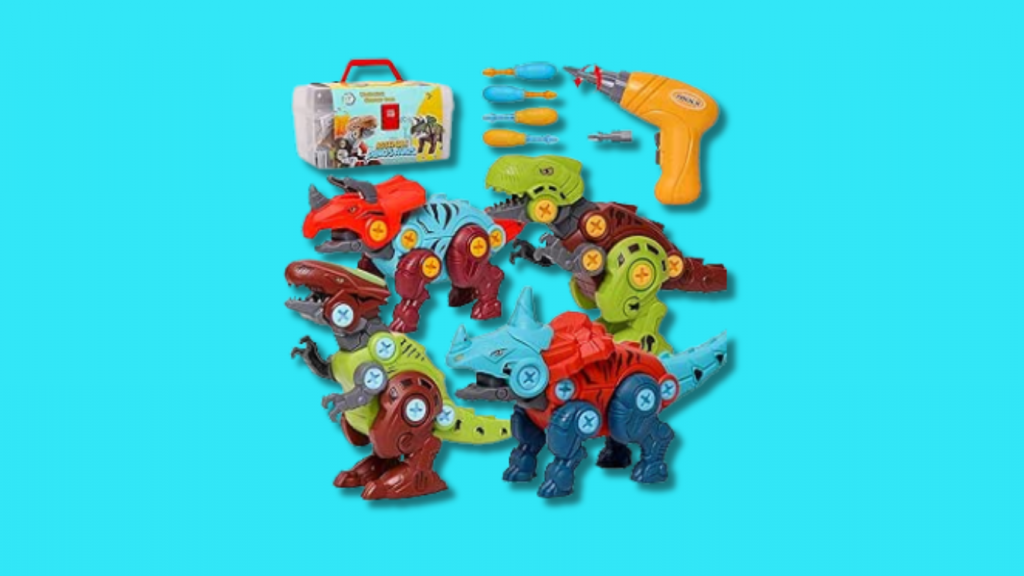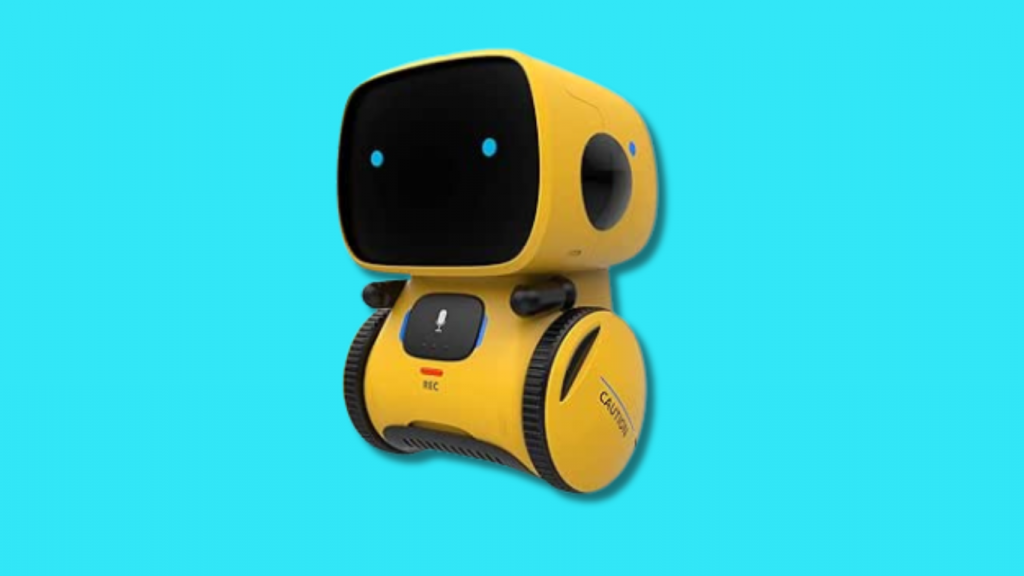Blogs
In the realm of early childhood education, Montessori principles emphasize hands-on, self-directed learning that nurtures a child’s natural curiosity. Sensory toys play a crucial role in this approach, engaging multiple senses to aid in the development of various skills. Among these, magnetic tiles stand out as exceptional tools that blend fun and education seamlessly. This article explores the benefits of magnetic tiles as sensory Montessori toys and explains why they are the best choice for fostering creativity in kids.
Understanding Montessori Education and Sensory Play
Montessori Education Principles
Montessori education, developed by Dr. Maria Montessori, is based on the idea that children learn best through active exploration and hands-on experiences. Key principles include:
- Child-Centered Learning: Children choose activities based on their interests, promoting independence and self-motivation.
- Prepared Environment: Classrooms are designed to encourage exploration and discovery.
- Hands-On Learning: Learning materials are tactile and designed to be manipulated, aiding in the development of fine motor skills and cognitive abilities.
- Mixed Age Groups: Children of different ages learn together, fostering peer learning and cooperation.
The Importance of Sensory Play
Sensory play involves activities that stimulate a child’s senses—touch, sight, sound, taste, and smell. This type of play is essential for brain development and helps children process and understand the world around them. Benefits of sensory play include:
- Cognitive Growth: Enhances memory, problem-solving skills, and decision-making.
- Motor Skills: Develops fine and gross motor skills through tactile manipulation.
- Language Development: Encourages communication and vocabulary expansion.
- Social Interaction: Promotes cooperative play and social skills.
Magnetic Tiles: A Sensory Montessori Toy
What Are Magnetic Tiles?
Magnetic tiles are flat, geometric shapes with embedded magnets along their edges, allowing them to connect and form various structures. They come in a variety of colors, sizes, and shapes, such as squares, triangles, and hexagons. These tiles are designed for open-ended play, meaning there are no set instructions or limitations on what children can create.
Magnetic tiles offer numerous benefits that align perfectly with Montessori principles and sensory play:
Enhancing Creativity and Imagination
- Children can build anything they envision, from simple shapes to complex structures.
- Open-ended nature encourages imaginative play and creative problem-solving.
Developing Cognitive Skills
- Building with magnetic tiles requires planning and spatial awareness.
- Encourages understanding of geometric concepts and symmetry.
Improving Fine Motor Skills
- Manipulating the tiles helps develop hand-eye coordination and dexterity.
- Strengthens fingers and hands through repeated connection and disconnection of pieces.
Promoting STEM Learning
- Introduces basic principles of engineering, physics, and mathematics.
- Encourages exploration of magnetism and structural stability.
Facilitating Social Interaction
- Children can collaborate on building projects, fostering teamwork and communication.
- Provides opportunities for shared play and cooperative learning.
Stimulating Multiple Senses
- Bright colors and tactile surfaces engage visual and touch senses.
- Clicking sounds of tiles connecting can be satisfying and engaging for auditory learners.
Integrating Magnetic Tiles into Montessori Education
Creating a Prepared Environment
In a Montessori setting, the environment is key to facilitating self-directed learning. Here’s how magnetic tiles can be incorporated:
- Accessible Storage: Keep magnetic tiles in an easily accessible, organized space where children can choose them independently.
- Variety of Tiles: Provide a range of shapes, sizes, and colors to encourage diverse creations and exploration.
- Complementary Materials: Pair magnetic tiles with other Montessori materials like wooden blocks, puzzles, and natural objects to expand learning possibilities.
Guided Activities and Free Play
While Montessori emphasizes self-directed learning, guided activities can introduce new concepts and spark interest. Some ideas include:
- Shape and Color Matching: Ask children to find and match tiles of the same shape or color.
- Pattern Creation: Challenge children to create specific patterns or symmetrical designs.
- Storytelling: Encourage children to build scenes or structures and create stories around them.
Free play is equally important, allowing children to explore at their own pace and follow their interests. This balance helps maintain engagement and promotes deeper learning.
Encouraging Collaborative Play
Magnetic tiles are excellent tools for collaborative play, an essential aspect of Montessori education. Set up group activities where children work together to build larger structures or solve construction challenges. This fosters communication, teamwork, and social skills.
Safety and Quality Considerations
Safety Standards
When selecting magnetic tiles, safety is paramount. Ensure the tiles meet the following criteria:
- Non-Toxic Materials: Look for BPA-free, lead-free, and phthalate-free certifications.
- Durable Construction: Tiles should be made from strong, durable plastic that can withstand rough play.
- Secure Magnets: Magnets should be securely embedded to prevent them from becoming loose and posing a choking hazard.
Quality Brands and Products
Investing in high-quality magnetic tiles ensures longevity and safety. Some reputable brands include:
- Magna-Tiles: Known for their durability and high-quality construction.
- PicassoTiles: Popular for their vibrant colors and variety of shapes.
- Playmags: Offers a wide range of sets with different shapes and accessories.
Parental Assurance
Parents often seek reassurance about the safety and educational value of toys. Look for products with positive reviews and certifications from safety organizations. Testimonials from other parents and educators can also provide valuable insights.
Real-Life Benefits: Testimonials and Success Stories
Parental Testimonials
Parents who have integrated magnetic tiles into their children’s playtime often share positive feedback:
- Creativity Boost: “My child spends hours creating different structures. It’s amazing to see how imaginative and detailed their creations are.”
- Educational Value: “I’ve noticed a significant improvement in my child’s problem-solving skills and spatial awareness since we started using magnetic tiles.”
- Safety Assurance: “The tiles are very durable, and I feel confident knowing they are made from non-toxic materials.”
Educator Success Stories
Educators in Montessori settings also report success with magnetic tiles:
- Engagement in Learning: “Magnetic tiles capture the children’s attention and keep them engaged in learning activities for extended periods.”
- Cooperative Play: “I’ve seen children naturally gravitate towards group projects with magnetic tiles, fostering a sense of community and teamwork.”
- Developmental Progress: “Students show noticeable progress in fine motor skills, cognitive development, and creativity through regular use of magnetic tiles.”
Choosing the Right Magnetic Tiles
Age Appropriateness
Magnetic tiles are suitable for children aged 3 and up. When selecting tiles, consider the following:
- Complexity of Sets: Choose sets with a variety of shapes and pieces to match the child’s developmental stage.
- Growth Potential: Opt for sets that can be expanded with additional pieces as the child grows and their skills develop.
Evaluating Cost and Value
While magnetic tiles can be an investment, their educational value and durability offer long-term benefits. Consider:
- Longevity: High-quality tiles can last for years and be used by multiple children.
- Versatility: Magnetic tiles can be used in various ways, offering endless play possibilities and learning opportunities.
Conclusion
Magnetic tiles are the best sensory Montessori toys for creative kids, combining the principles of hands-on learning, sensory engagement, and open-ended play. They offer numerous developmental benefits, from enhancing cognitive and motor skills to fostering creativity and social interaction. By integrating magnetic tiles into a child’s playtime, parents and educators can provide a fun, safe, and educational experience that aligns with Montessori values.

